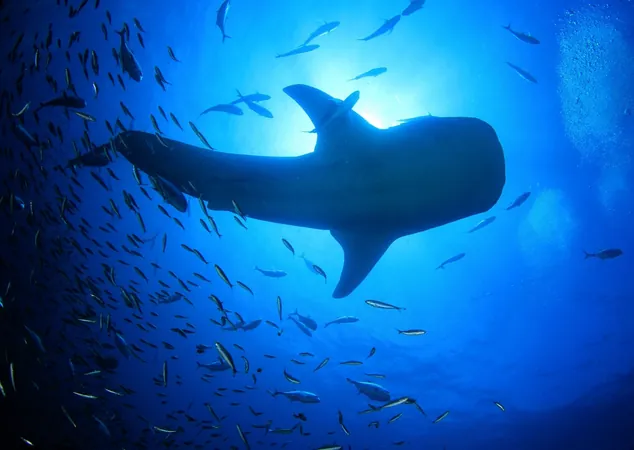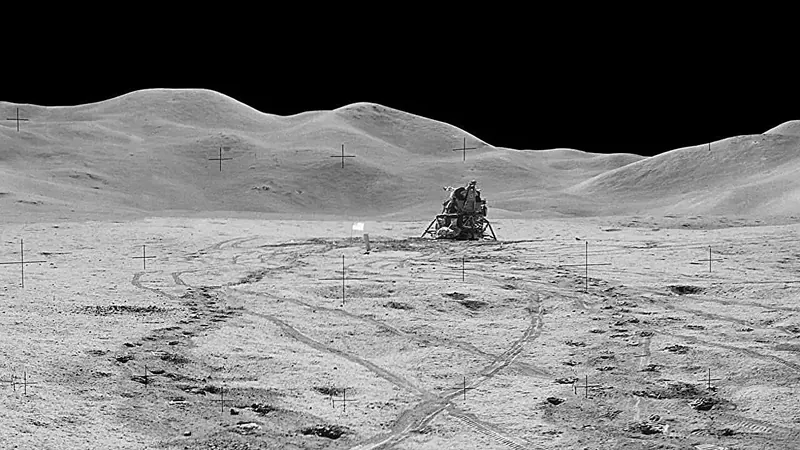
Is the Ocean's Color Changing? Discover How Marine Life is Moving Toward the Poles!
2025-06-21
Author: Liam
A Deep Dive into Ocean Color Changes
For decades, oceanographers have held a simple truth: vibrant green waters are alive with microscopic organisms, while deep blue hues often signal a lack of life. But a groundbreaking analysis of 20 years of satellite data reveals something extraordinary: this colorful divide is shifting, pushing marine life toward the poles.
The Evidence is in the Data
A team of researchers, led by Duke University post-doc Haipeng Zhao, meticulously studied satellite images from 2003 to 2022, utilizing NASA's MODIS-Aqua instrument to track chlorophyll levels—the green pigment in phytoplankton that is vital for photosynthesis.
Their findings indicate a trend: open ocean waters are becoming greener at high latitudes while losing their chlorophyll-rich vibrancy in the tropics and subtropics. This means there is less plankton in the warmer equatorial waters, even as it flourishes in colder polar regions.
Innovative Approaches to Data Analysis
Navigating through cloudy skies and sensor failures is no easy task. To make sense of the data, Zhao and his team employed statistical tools borrowed from economics—the Lorenz curve and Gini coefficient—to reveal how chlorophyll distribution has evolved over the past two decades.
Lead investigator Nicolas Cassar notes this unique approach provided clarity: regions already rich in chlorophyll are thriving, particularly in the northern hemisphere, while blue areas are losing pigment.
Climate Change: A Complicated Connection
While the shift to greener poles and bluer tropics appears to hint at global warming, the study remains cautious. Co-author Susan Lozier from Georgia Tech points out that the timeframe isn't long enough to conclusively tie these changes to climate change alone.
Only sea-surface temperature showed a consistent correlation with the color changes, leaving room for other environmental influences, like recurring climate phenomena such as El Niño.
Why This Matters: The Bigger Picture
Phytoplankton are more than just colorful indicators; they play a critical role in carbon capture, absorbing CO2 and converting it into organic matter. This poleward migration of productivity could significantly impact the ocean’s carbon storage capabilities. Cassar warns that the depth and location of carbon storage are crucial, as shallow carbon could return to the atmosphere faster, undermining phytoplankton’s role.
Moreover, food security is at stake. Many equatorial countries depend on rich fisheries supported by plankton blooms. A decline in these primary producers could disrupt the marine food web, threatening vital fish stocks.
An Ongoing Transformation
This research positions ocean changes within a broader narrative of ecological shifts occurring across the globe. Satellite measurements document similar transformations on land, with forests expanding in high latitudes and vegetation suffering in subtropical zones.
Yet, researchers stress that this is only the beginning. Continued observations over the coming decades will be essential to fully understand these complex changes and their far-reaching ecological impacts. As green hues bloom in polar regions while blues fade near the equator, our oceans are quietly undergoing a significant transformation that could reshape global marine life and climate feedback systems.
The study has been published in the journal Science.









 Brasil (PT)
Brasil (PT)
 Canada (EN)
Canada (EN)
 Chile (ES)
Chile (ES)
 Česko (CS)
Česko (CS)
 대한민국 (KO)
대한민국 (KO)
 España (ES)
España (ES)
 France (FR)
France (FR)
 Hong Kong (EN)
Hong Kong (EN)
 Italia (IT)
Italia (IT)
 日本 (JA)
日本 (JA)
 Magyarország (HU)
Magyarország (HU)
 Norge (NO)
Norge (NO)
 Polska (PL)
Polska (PL)
 Schweiz (DE)
Schweiz (DE)
 Singapore (EN)
Singapore (EN)
 Sverige (SV)
Sverige (SV)
 Suomi (FI)
Suomi (FI)
 Türkiye (TR)
Türkiye (TR)
 الإمارات العربية المتحدة (AR)
الإمارات العربية المتحدة (AR)